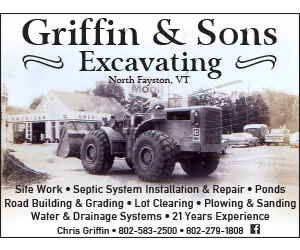On Monday, February 10, the University of Vermont’s Water Resources Institute hosted a Q&A-style panel on applied water research, with an emphasis on the Lake Champlain Basin.
The local Mad River is a tributary of the Winooski River, which is the largest tributary to Lake Champlain.
The panel was the second in a series called “Water Connects,” co-sponsored by
the Leahy Institute for Rural Partnerships and moderated by UVM faculty Anne Jefferson.
TREATING POLLUTION
Much of the conversation focused on research regarding water quality and contamination. Reducing phosphorus in the basin is a primary concern, panelists said, as is chloride – a compound in various salts used to de-ice roads and sidewalks since the 1940s.
While de-icing salt is not the only source of chloride, a 2008 report produced by the Lake Champlain Basin Program (LCBP) found evidence that levels of chloride, at that time, were elevated far beyond typical in the northeastern U.S. The report called for more research on the potential negative effects for aquatic life and human health.
Chloride can easily leech into groundwater and is not easy to remove from watersheds, Shelburne Stormwater coordinator Shayne Geiger said. While towns are using less chloride salts per application, he added, the total use of salts is increasing with rapid freeze and thaw rates characteristic of climate change.
The panelists pointed out that currently, two bills circulating in the House and Senate (H.0086 and S.29), if passed, would establish a program to reduce chloride in the state’s waterways, including trainings for those who apply chloride salts.
Pharmaceutical compounds and polyfluoroalkyl substances (PFAS) – a group of synthetic chemicals resistant to heat, water, and oil – are also pollutants of concern for the Lake Champlain Basin, said LCBP researcher Matthew Vaughn.
Currently, both federal and state dollars are allocated for water treatment projects in Vermont, but if federal funding decreases under the Trump administration, that will put pressure on the state’s Clean Water Fund, Karen Bates of the state’s Department of Environmental Conservation said.
EDUCATIONAL EFFORTS
Panelists also fielded questions about university curriculum and educational efforts geared toward the public.
Regarding future work on watersheds, “are students well prepared?” one audience member asked. “What could we do more of, with education?”
Geiger said that university students should be taught to write grants and navigate regulatory bodies and processes. He also said that more research on water treatment practices is needed, recalling a recent study that showed how the use of gravel as a treatment medium for wetlands actually caused those wetlands to become a source of phosphorus.
UVM faculty in Geography and Environmental Sciences Beverley Wemple said that universities could be sending students out to document water-related issues on the ground – especially as local newspapers close down at a rapid rate across the U.S.
Wemple acknowledged opportunities for ‘service learning’ projects and journalistic work produced by students under The Center for Community News, but said, “We’re not really teaching our students how to navigate those realities. They sit in classrooms and learn about water quality.”
The panelists agreed that even as the public knows a lot about the Lake Champlain Basin – algae blooms, flood challenges and so on – they need more nuanced information, especially regarding contaminants in Lake Champlain.
Many people believe the lake isn’t safe to swim in, but that interpretation is not always accurate, Bates said.
An audience member asked about the use of lampricides – chemical pesticides used to kill sea lamprey larvae, which are parasitic to fish. Some research shows that the pesticides are generally safe for fish and other organisms, but could be harmful to some amphibians. Vaughn said that the LCBP has an ongoing study that looks at the effects on mud puppies – a species of aquatic salamanders, by tagging them in upstream treatment areas of the Lake Champlain Basin.
SMALL-SCALE EFFORTS
Finally, the panel spoke about small-scale interventions that individuals can perform, like looking into best practices for de-icing, creating culverts, and planting rain gardens – “even [planting] one tree,” Geiger said.
There is funding and technical assistance for some projects via the Clean Water Service Delivery Act, they added.
“What about people who don’t own their land?” an audience member asked. “What can renters who can’t manage their own stormwater do?”
“I don’t have a great answer for that,” Vaughn said. Voting is one way to stay engaged, and volunteering with a local watershed organization is another, he suggested.
Local nonprofit Friends of the Mad River has been monitoring water quality in the Mad River since 1985 and has the longest running volunteer water quality monitoring dataset in the country, according to the organization.
The next panel in the series “Water Connects” will focus on river corridor management and will be held on Monday, March 3, from 3:30 to 4:30 p.m. at the Montpelier Performing Arts Hub, at 35 College Street, Montpelier.














